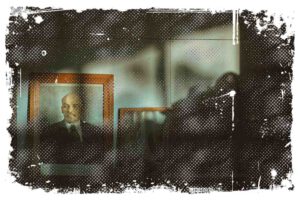The period after the Second World War was a nightmare for many nations. One of the most affected countries was Poland. Not only the cities were devastated but also 6 million people died during the war. When the war was over, Poland was left under the control of Stalin and the Soviet Red Army. In Poland, Communism enhanced.

Poland lost eastern territories in exchange for inheriting devastated western lands from the Germans. They required redevelopment. Many cultural artifacts from Poland have also been lost. Libraries, archives, sacred and secular art monuments, art artefacts. The occupation led to overall impoverishment and poverty, which favored speculation, drinking, robbery, and rape.
Post-war Losses
The areas most affected in Poland were the cities and industrial complexes. Warsaw was totally destroyed. Bialystok burned to the ground. Elblag and Gdansk were ruined, mostly as a result of the Allied bombing of the ports. Poznan was devastated by the ongoing battles. The infrastructure was destroyed everywhere, and even if it wasn’t, it was extremely poorly maintained. No one took care of it during the war. In addition, there were housing problems. People had nowhere to live, resulting in mandatory accommodation and the sharing of apartments with strangers.

While no social group avoided casualties, the most serious ones occurred among the intelligence community. The political, intellectual, and cultural elite of the population were exterminated. According to estimates, 37% of those who had acquired a higher education in Poland were killed. Hence, the post-war staff promotions and post-war personnel rotation should not be surprising. There were also quite revolutionary changes in property ownership. Large factories were first taken over by the Germans but were later nationalized and became Polish national property.
↳ PRO TIP: Do you like traveling? Then before you buy any ticket or book an attraction, check if it's available in this worldwide Viator Database. You may save a lot of money and time. No need to thank me :)
| Year | Territory | Citizens – Total | Citizens – Polish | Citizens – Other Nationality |
| 1939 | 389,000 km2 | 35 M | 24 M | 11 M |
| 1945 | 312,000 km2 | 24 M | 21 M | 3.4 M |
Explosion of Prosperity But Also Crimes in 1946
People starved. In the autumn of 1945, bread prices skyrocketed. It was impossible to get it. In fact, there was trouble getting everything. The government introduced new rules. There were three meatless days, as well as cakeless days.
Warsaw was full of merchants, but not only Warsaw. Markets emerge, restaurants open, women set up coffee shops or pastry stores. This came to an end in May 1947. The communist government declares war against speculators.
The mentality in Poland changed if you compared it to the pre-war periods. In reality, crime, murder, and theft were more acceptable than they had been in the past. It was socially accepted to kill a German soldier or steal from a German factory. This behavior remained after the war, especially since everything was „temporary”. People lived in temporary places, even the government was temporary. Socially bad behaviour was also meant to be done just temporarily.
Alcohol was also very important in society. If you consider that there was no money, food, or goods but you could produce moonshine, it quickly became a payment method. With a bottle of vodka, you could pay for food in a shop, or you could give it to a Russian soldier, so he gave you a ride. It was also used to deal with public institutions’ employees. It was a universal trading method, easy to carry and for many – easy to produce. You could do it even from potatoes.

The Way The Economy Developed
In the first post-war years, the main concern of the government and society became the need to rebuild the country and develop the western and northern lands.
They repaired bridges and restored communications. Miners began to work hard in coal mines. Coal was, at that time, the only Polish export product. It was possible to import necessary goods from other countries. One of the greatest achievements of Polish society was the rapid redevelopment of Warsaw. The desperate situation in agriculture and industry favored the policy of taking over all private factories and enterprises.
Industrialisation: 3-Year and 6-Year Plan
There was created a special institution called the Central Planning Office. Its main task was to design and implement the post-war recovery plan. Their first and the only one that turned out to be successful was the so-called „3-Year Plan”. This plan did not consider building new factories. Investment funds were mainly allocated for the reconstruction of businesses that were damaged the least after the war. It also gave priority to rebuilding industries operating for the needs of society.

The Six-Year (1950 – 1955) plan was focused on political goals (not economic ones) and was strictly managed by leaders in Moscow. There was an emphasis on developing heavy industry, which included mines and steel mills. During this period, new steelworks were created near Cracow (Nowa Huta). At the same time, Poland expanded its defence and armament industries. That didn’t end well for other sectors, such as the food and agriculture industries. They were neglected, so the citizens’ standard of living declined. The plan failed, and people became more frustrated.
Gierek – The Man Who Brought Coca-Cola
The 1960s brought to Poland a worsening of the economic situation. All the new market-oriented reform ideas and projects were categorically opposed by the communists.
Prices on consumer goods increased, as well as wages were cut. All of that resulted in the worsening of Poles’ social and living situations. It very often ended up with protests, and very often they turned into huge demonstrations. A very good example of such an event was the strike in December 1970 on the Polish Coast.
The new hope for a better future was brought by Edward Gierek. He was nominated as First Secretary of the Central Committee of the Polish United Workers’ Party (PZPR). In order to stimulate the domestic economy, he took huge loans from Western countries.

Source: Wikipedia Commons
Gierek’s decade introduced new technologies to the economy. Mainly machinery, heavy industry, and construction. In 1972, he introduced a spectacular project. He planned to build „Katowice Steel Plant”. Also, a new railway line connecting the Dabrowa Basin with Warsaw and the coast was built. Gierek will also be remembered by Poles as the man who first introduced us to Coca-Cola.
The Final Word
The overall balance of economic growth in Poland after WWII compared to other countries was poor. By 1950, Poland’s contribution to world GDP was 1.13%, and by 1989 it had dropped to 0.81%. It clearly shows that the influence of Soviet Moscow and communism in Poland was negative. While other European countries developed in the 50’s, 60’s and 70’s, Poland remained economically unstable. The transition occurred in 1989, when communism was finally abolished.
Biography
- Encyklopedia PWN, http://encyklopedia.pwn.pl, 1997–2014 WN PWN SA
- Zniszczenia wojenne w zabudowie miast i wsi według stanu w dniu 1 V 1945 r., GUS, Warszawa 1967



